The App Strategy Workshop in Paris took place on 28 April. Returning to the beautiful Microsoft Conference Center, the event was jam-packed with around 230 attendees. App Annie presented a keynote, alongside 20 speakers from the likes of Deezer, AXA, Etsy, AdColony, Amazon Appstore, Flurry from Yahoo!, Branch Metrics, Mopria Alliance, Google and more. Check out the key takeaways from the event and learn more about Growth Hacking, UX for Engagement, Monetization and more from leading industry experts.
Panel: Growth Hacking Strategies
Speaking on the topic of Growth Hacking Strategies were Mike Winters, Operations Europe, Branch Metrics, Guillaume Martin, CEO, Pictarine, Martin Boutges, Product Manager, BlaBlaCar, Alexandra Combeau, Digital & Mobile Marketing Expert, Next Level. James Bott, CEO & Co-Founder, The ASO co moderated the panel.
Mike Winters, Operations Europe, Branch Metrics recommended mobile web to app as a complementary strategy for user acquisition. At Branch they see a number of partners who have very rich mobile content and sometimes they chose to take a user to a mobile website rather than to the app store. Once on the website users can see inside the app and ‘deep link’ to mobile content. This strategy has proven successful for many of their partners.
Martin Boutges, Product Manager, BlaBlaCar, spoke about the high cost of referral programs – if you want to be economically relevant for someone to recommend your app you have to offer 10 euro per user acquisition. He added that if you want a viral app, you should just nail the product.
Alexandra Combeau, Digital & Mobile Marketing Expert, Next Level, said that localisation is definitely a must do and translation should include everything – not just the app description, but keywords and screenshot titles too. Plus localisation is also graphic style. Different countries and cultures prefer different graphic styles and adapting those is an important part of the localisation process.
The panel was in agreement that knowing your data through the use of analytics, testing and tracking is crucial. Guillaume Martin, CEO, Pictarine, added that it is important to use the same analytics service for your business, UX and tech metrics, so you can easily compare different metrics.
Presentation: Improving Appstore Rank: Best Practices (& tactics to avoid)
Mario Viviani, Technology Evangelist, Amazon Appstore
Mario Viviani, Technology Evangelist, Amazon Appstore, cut to the chase and addressed the biggest issue for both publishers and app store managers: discoverability. Stores are introducing different ways to improve discoverability by selecting apps that are interesting to users or automated lists created by algorithms that check reviews, ranking and downloads to present more apps, recommendations, featuring and bundles
Among many other tips, Mario Viviani gave advice on monetisation, stating that often developers have a great idea about an app but no idea how to monetise it. Developers should structure their app around their monetisation model, not the other way around. Publishers can choose from a range of models like freemium and premium. Amazon App Store also offers different monetisation models such as ‘underground’, which pays per minute royalty, so as long as the user is using your app – it is monetising, or merchandising, which allows developers to create t- shirts for their apps and games and easily sell them on the store.
Panel: The Importance of UX in Engaging Your Users
A music app (Deezer), a kids edtech app (Hopster), an insurance app (AXA) and a Retail app (RetailMeNot) all found a common trend – after user testing, all apps had to radically change their UX in order to retain users.
Rich Brown, UX Lead from Etsy was the moderator of a panel including the following speakers: Mahesh Ramanchandra, Head of Product, Hopster, Stephane Delbecque, Director of Digital Expertise, AXA, Jamie Mercer, Senior Product Manager, RetailMeNot and Julie Knibbe, Senior Product Manager – Discovery, Deezer
Julie Knibbe, Senior Product Manager – Discovery, Deezer shared that originally, it was important to have discoverability and show a lot of music choices in the app. However giving too many choices was overwhelming for users. So Deezer came up with a feature called “flow”, which is one basic play button in the app, so users didn’t have to spend time making a music choice. This increased retention rate dramatically.
AXA, as an insurance app had very business centric content. According to Stephane Delbecque, Director of Digital Expertise, AXA, the brand recognition ensured a great number of downloads, but the usage was really low. So AXA conducted a questionnaire across different geographies and adapted their UX based on the results.
Mahesh Ramanchandra, Head of Product at Hopster, said that when they spoke originally with parents, they expressed a need for full parental control with lots of features. However when parents actually started using the app, they discovered that their priority was in fact to have peace of mind that the service harboured a secure and safe environment for their kids
Jamie Mercer, Senior Product Manager, RetailMeNot, highlighted that it is really important to understand your users and separate them into the right cohorts. Cohorts divide the users in different groups based on demographics, psychographics, behavioural metrics, work place etc. So for example, at RetailMeNot, they have different content strategies for different cohorts.
Presentation: Mobile Print – Disruption, collaboration, and Opportunity
Mark Boyt, Head of Solutions & Services Marketing, Mopria Alliance
Mark Boyt, Head of Solutions & Services Marketing, Mopria Alliance, opened by asking the audience to stand up if they had printed from their mobile phone. A few people did, but there clearly could have been many more. According to research, 95 % of consumers and 67 % of business users desire to print from their mobile devices, so Mark Boyt encouraged more app publishers to include print functionality in their apps.
Panel: MONETISATION; LATEST TIPS FROM THE EXPERTS
Speaking on the topic of Monetisation, latest tips from the experts were Pierre-Olivier Camus, EMEA Mobile Specialist, Google, Stefan Adamczyk, VP Advertising EMEA, AdColony, Jean-Baptiste Fleury, Mobile Studio Director, Virtuos Games, Thomas Coulon, Senior Publisher Sales Manager – Flurry from Yahoo!. Alexandre Jubien, Mobile Strategist, ThinkMobile was the moderator.
Thomas Coulon, Senior Publisher Sales Manager – Flurry from Yahoo! opened the panel with a question: How many of you have ever paid for an app? Around 70% of the crowd raised their hand. How many of your have paid more than one time? Only around 25% responded.
Thomas added that users buy an app only if there is a specific purpose and an offering that is unique and not provided by a free app. In gaming that can also include exclusive branding and content in a game franchise. These kind of apps usually have a premium model.
Jean-Baptiste Fleury, Mobile Studio Director, Virtuos Games followed up on the freemium model, which is widely used in the app industry today and was started in the video game industry over 15 years ago. The idea is simple: starting with free-to-play you then have to pay for in-app purchases. According to Jean, typically around 95% will never pay, but that 5% can bring a lot of money.
Pierre-Olivier Camus, EMEA Mobile Specialist, Google, continued to elaborate on the freemium model. He said that in 2015 more than 90% of downloads were for free apps and this is expected to reach 95% in less than 3 years. Additionally, if you look into the top 50 grossing gaming apps worldwide, you will only find free apps. So if only 5% of the users are generating 95% of the revenue in general, what do you do with the remaining ones?
The answer in a word: Advertising. This is where Stefan Adamczyk, VP Advertising EMEA, AdColony jumped into the conversation. He shared that the advertising industry will be worth $100 billion in 2016. The mobile video market in the US alone will be worth $4billion dollars this year. As the phone has become consumers first screen for video, video ads provide more and more opportunity to monetise.
Stefan added that when he works with publishers, AdColony’s key recommendation is to make the video ads relevant. His example was: “If you are home on Friday night and you see a video for a food service app, you might think – you know what, I am hungry, I might well download that app and order some food.”
Fireside Chat – Startup Stories
Kayla Roark, Director of Development, France Digitale moderated a fireside chat with Marc-Antoine Durand, CEO & Co-Founder, LiPP.
Marc-Antoine Durand, CEO & Co-Founder, LiPP, spotted a niche in the video offering side of the market. According to him, most video apps are not user friendly, as “users want to watch funny videos, but they don’t want to search for them.” So he created LiPP, on which you can also easily share and edit videos with text and music.
Marc and the LiPP team have developed a very detailed features selection process. Their approach is simple – if 25% of people don’t use a feature, they remove it. They also invite their main target group, millennials, and test how they use the app for the first time and whether they understand and use the features. Then they write a report and change the app accordingly.
Acquisition though social media is great but for startup publishers, the CPI (Cost Per Install) on Facebook can be very high. According to Marc, you have to spend a lot of money to get a lot of downloads. Even if you have very low CPI, you have to scale.
But there are other options – like Snapchat. LiPP worked with a 15 year old influencer with 20000 viewers on Snapchat. The conversion rate was 20%. Marc believes this to be down to the high level of content engagement on Snapchat. The challenge with Snapchat is that you can’t track directly, but you can see the peak and track the difference between organic growth and downloads that come from Snapchat.
KEYNOTE: App Forecast; Market opportunities from the App Economy
Thierry Guiot, South Europe Territory Director, App Annie
Thierry Guiot, South Europe Territory Director, App Annie closed the event with a presentation focusing on app trends and forecasts. With a wealth of information shared here are a few highlights.
According to the latest AppAnnie data, worldwide download levels are driven by GooglePlay with roughly double the amount of downloads than iOS, however it is exactly vice versa in terms of revenue – iOS is still leading the revenue worldwide.
Thierry highlighted that at the moment 50% of all downloads are in the US and China and 65% of revenue comes from the US, Japan and China. There is an interesting trend, as China is taking the lead in both charts. In Q1 2015 China has generated more downloads on iOS than the US and in this quarter China is going to surpass Japan in terms of revenue.
Usage has evolved over the past years and it is increasing at amazing speed: in 2015 there was 60% more usage than in 2014. According to AppAnnie this is a huge opportunity for monetisation.
App store downloads will grow from 111.2 billion in 2015 to 284.3 billion by 2020 with App store consumer spend to exceed $100 billion in 2020. In 2016 alone, global app store downloads are expected to grow 33% to 147.3 billion. So clearly, these numbers are evidence of the major growth of the industry.
Amazing Giveaways
The event finished with a networking reception and some amazing giveaways: one lucky attendee bagged an app-controlled drone with a HD camera and another walked home with a BB-8 Star Wars Droid.
THANKS TO OUR SPONSORS!
SEE EVENT pictures on Facebook
Dobriyana Tropankeva
Communications and Events Manager, EMEA

















